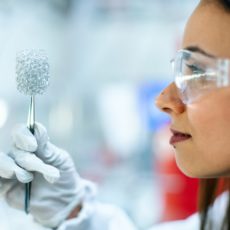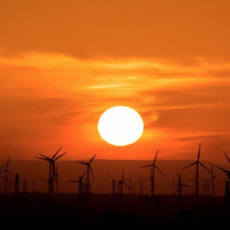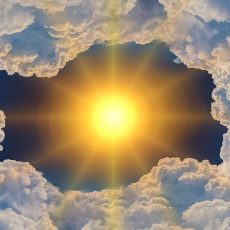The Planetary Boundary (PB) concept was introduced in 2009, and was aimed at defining the environmental limits within which humanity can safely operate. These scientifically prescribed thresholds are laid out in order to protect the Earth’s fragile
Read moreAuthor: Chrystal
Al Gore’s Climate Reality

I am currently fortunate enough to be participating in the virtual training from the Climate Reality Project, which at the end will mean I’m part of the Climate Reality Leadership Corps. This program has been running for
Read moreThe Good and the Bad of Carbon

Carbon is a necessary part of all life on Earth. Every living thing contains carbon, as it’s required to form molecules like proteins, as well as being present in the ocean, rocks and, of course, our air.
Read more5 New Clean Tech Innovations

There is no doubt in my mind that the human species can figure out a way to slow, or perhaps even stop, the Earth’s rapid descent into an uninhabitable, hot mess of a wasteland. Humans were the
Read more5 Big Businesses Turning Green

There is no shortage of companies who are suddenly using phrases like carbon neutral, net zero, climate positive, and carbon negative in their marketing and communications. But how much of that is buzz and how much is backed by action? As consumers, we have to get smarter. We have to understand that simply throwing a ‘green’ or ‘eco’ phrase onto some packaging does not make the product, nor the company, an environmental or sustainability warrior. We have to dig deeper than that, to look beneath the words to see that there’s substance. And happily we can report that plenty of companies aren’t just paying the climate lip service – 23% of Fortune 500 companies have actual, robust and ambitious climate goals. This is largely due to the fact that we, the consumer, ARE digging deeper, and ARE expecting more from the companies we hand over our cash to. Great work, swrmers! So dive in to find out what some of the biggest global corporations are doing.
Read moreRenewed Drive On Renewables

It would be easy to get lost in the barrage of negativity and bad news right now. But fear not, I have some good news for you today! We’ve done a round up of some of the places from across the globe who are holding steady on their course to a more sustainable future, even in these tumultuous times, by harnessing renewable energies. There are good, important and powerful (ahem) things happening in the renewable energy sector. Let’s take a quick trip round the world to see who’s doing what!
Read moreThe Unwanted Renaissance of Single-Use Plastics

Plastics, and particularly single-use plastics, had been starting to decline in popularity all over the world. More and more countries have been introducing bans on plastic bags, plastic straws, plastic cutlery and so on, like France, Australia, England, 15 countries in Africa, China (who banned bags thinner than 35 microns in 2008, and are now going all in on plastic bags) and 8 states in the Unites States. But then 2020 came along, bringing COVID-19. Suddenly, here was an opportunity for purveyors of plastic to sneak the product back in front of us, under the guise of public health and safety. But is this based on science, or is it merely opportunistic fear mongering? We lay out some evidence and advice, and dispute some cheap tactics.
Read moreFire & Ice in the Arctic Circle

When you think of Siberia, you probably picture snow mobiles and huskies. These sights, however, are to become less of the norm, replaced instead with out of control wild fires and disappearing sea ice. Siberia, and indeed other parts of the Arctic Circle in Canada, Alaska and Scandinavia, are expected to really start heating up. As in, twice as fast as the rest of the world. It has long been known that global warming will impact Arctic regions much more severely than elsewhere on the planet, because of the loss of ice and snow, which can effectively reflect a large proportion of the radiative heat from the sun’s UV rays. This is “Arctic amplification” and is a great example of the importance of realizing that 1.5°C of global warming is an average, and does not simply mean that wherever you are in the world, you’re going to feel 1.5°C warmer. Many places on Earth will experience average temperatures much higher than this increase.
Read moreOur Warming Waters – devastating for so many reasons!

When we think about global warming, our first thought is usually about heat trapped in the atmosphere by greenhouse gases. But the phenomenon of global warming, one of the major symptoms of climate change, is also causing the warming of our oceans. A while ago we explored the rising sea levels — and touched on the reasons and expected impacts. But it’s time to wade deeper into the health of our oceans.
Read moreDoes the Ozone Layer still have a hole in it?

Ozone is a gas. A toxic, pale blue, odorous, irritative and explosive gas. But without it being naturally formed and making up part of our atmosphere, we’d be unable to survive on Earth. We’d literally fry from the sun’s ultraviolet rays. The thin layer of ozone, which sits in the bottom part of the stratosphere about 9-18 miles above the Earth, absorbs approximately 98% of extremely harmful UVB rays, which are the most damaging of the ultraviolet types (A, B and C). So, way back in the 80’s when it was discovered that there was a ‘hole’ in this protective layer of gas over Australia, Antarctica and the Arctic, a massive global response was initiated.
But what ever happened? Are there still holes up there? The ozone layer doesn’t get much air time these days. And is ozone anthropogenic or natural? Read on to learn all about it!

